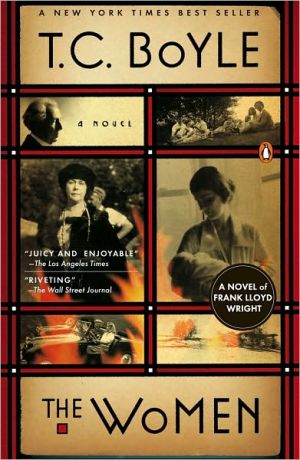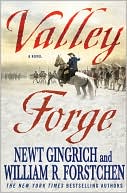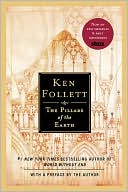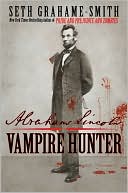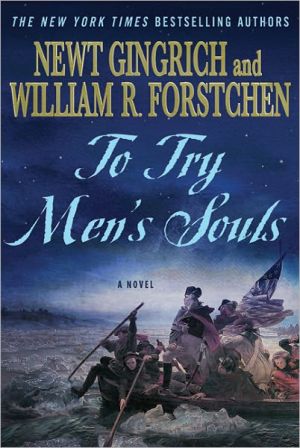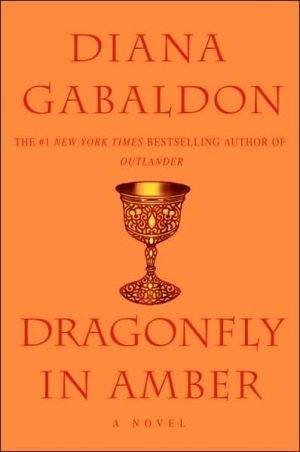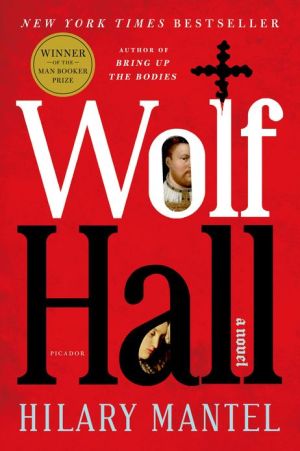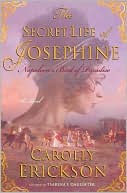The Women
From "America's most imaginative contemporary novelist" (Newsweek), a novel of Frank Lloyd Wright and the women in his life.\ Having brought to life eccentric cereal king John Harvey Kellogg in The Road to Wellville and sex researcher Alfred Kinsey in The Inner Circle, T.C. Boyle now turns his fictional sights on an even more colorful and outlandish character: Frank Lloyd Wright. Boyle's incomparable account of Wright's life is told through the experiences of the four women who loved him....
Search in google:
Frank Lloyd Wright’s life was one long, howling struggle against the bonds of convention, whether aesthetic, social, moral, or romantic. He never did what was expected, and he never let anything get in the way of his larger-than-life appetites and visions. Told through the experiences of the four women who loved him, this imaginative account of Wright’s raucous life blazes with Boyle’s trademark wit and invention. Boyle’s protean voice captures these very different women and, in doing so, creates a masterful ode to the creative life in all its complexity and grandeur.The Barnes & Noble ReviewFrank Lloyd Wright, visionary architect and center of what was tantamount to a cult, has already been the subject of a novel in the last couple of years (Loving Frank by Nancy Horan). And here he is again, this time taking his place in T. C. Boyle's gallery of wickedly drawn American gurus: John Harvey Kellogg (The Road to Wellville), Alfred C. Kinsey (The Inner Circle), and the fictional Norm Spender (Drop City). A canny friend to humanity and driven presenter of his own designs as nature's, Wright is just the man for a writer possessing a pen as adept as Boyle's in portraying power games and nature's dark side -- human and otherwise.
\ From Barnes & NobleA Selection of Barnes & Noble Recommends\ A revelatory view of a genius creator, his wives and his lovers….\ \ In this dazzling historical novel, master architect Frank Lloyd Wright comes alive through the words of four women he loved. Their voices are radically dissimilar: Montenegrin ballerina Olgivanna Milanoff; tempestuous southern belle Maud Miriam Noel; free-spirited, tragically fated Mamah Cheney; and artist Kitty Tobin, Wright's first wife. In The Women, adventurous novelist T. C. Boyle (The Road to Wellville; The Inner Circle) exposes Wright's deep-seeded resistance to convention in every arena of his life.\ \ \ \ \ Marie AranaThe Women is an altogether manic, occasionally baffling and yet strangely riveting novel…Boyle is a marvel at descriptive prose…So you go on, from scene to scene, marveling at a turn of phrase or some well-articulated emotion. As with a fickle lover, it's the words that keep you there.\ —The Washington Post\ \ \ Joanna ScottBoyle doesn't just fiddle around with familiar biographical material. He inhabits the space of Wright's life and times with particular boldness…With his rollicking short fiction and with novels that include The Road to Wellville, The Inner Circle and Drop City, Boyle has been writing his own fascinating, unpredictable, alternately hilarious and terrifying fictional history of utopian longing in America. The Women adds a powerful new chapter to this continuing narrative, and it is Boyle at his best. It is a mesmerizing story of women who invest everything, at great risk, in that mysterious "bank of feeling" named Frank Lloyd Wright.\ —The New York Times\ \ \ \ \ Publishers WeeklyRising and falling in steady rhythm, soothing even when the story unsettles and surprises, Grover Gardner's voice is a fine instrument. He delivers a stellar rendition of Boyle's reimagining of Frank Lloyd Wright's tortured relationships with his wives and lovers-and his obsession with Taliesin, his home in Wisconsin, which suffered no less than the architect or his women. Gardner, a regular prize-winner who's done more than 650 audiobooks, is familiar to audio listeners, but he strikes new notes, hurdling over difficult names and nimbly skipping from character to character. Readers will be entirely immersed in the hothouse world of the architect and his women. A Viking hardcover(Reviews, Nov. 17).(Feb.)\ Copyright © Reed Business Information, a division of Reed Elsevier Inc. All rights reserved.\ \ \ \ \ Library JournalIn his trademark style, Boyle (www.tcboyle.com) uses a fictional narrator to tell the story of an American original: Frank Lloyd Wright, that flamboyant genius of 20th-century architecture. The tale unfolds through the experiences of four women who loved Wright: the Montenegrin beauty Olgivanna Milanoff, the passionate Maude Miriam Noel, the spirited Mamah Borthwick Cheney, and Wright's devoted first wife, Catherine "Kitty" Tobin. Narrator Grover Gardner, a Publishers WeeklyNarrator of the Year (2005), navigates the complicated story line with ease, reading with a distinctive clipped accent that could almost be Japanese (the novel's narrator is Wright apprentice Tadashi Sato, newly arrived from Japan). An excellent choice for fans of popular and literary fiction. [Audio clip available through www.blackstoneaudio.com; the Viking hc was recommended "for most fiction collections," LJ12/08.—Ed.]—Nann Blaine Hilyard, Zion-Benton P.L., IL —Nann Blaine Hilyard\ \ \ \ \ Kirkus ReviewsWhen the artist formerly known as T. Coraghessan Boyle burst onto the national literary scene some 30 years ago, readers knew immediately that an immensely smart, versatile and entertaining new writer was staking his claim to some of the territory held by such reader-friendly wizards of narrative and rhetoric as Kurt Vonnegut and Donald Barthelme. To put it another way, Susan Sontag's sonorous declamations about the cultural legitimacy of "camp" found a lively correlative in the stories of Boyle's first collection Descent of Man (1979)-six more have followed. Who could resist crisp, in-your-face tales about the wretched excesses of pillaging Norsemen, or the spectacle of Ugandan dictator Idi Amin disporting himself at a Dadaist arts festival? Then, before we'd all stopped chuckling, Boyle produced his richly imagined and detailed debut novel Water Music (1981), in which historical Scottish explorer Mungo Park's African exploits became the vehicle for vivid observations and riffs on the nature of intellectual adventuring, heroism and arduously acquired self-knowledge. Boyle's subsequent novels have ranged from visions of fear and loathing in California's drug culture to the perils of the Internet-and commanded especially high visibility when reinterpreting well-known American success-and-failure stories, notably in deft fictionalizations of the complicated lives of cereal-king health faddist John Harvey Kellogg (The Road to Wellville, 1993) and innovative sex researcher Alfred Kinsey (The Inner Circle, 2004). The Women, Boyle's 12th novel, tackles another flawed American icon: the great architect and world-class egomaniac Frank Lloyd Wright (1867-1959), whose unique accomplishments wererepeatedly compromised because-as this novel's narrator informs us-"throughout his life, especially in times of duress, [Wright] sought the company of women." That narrator-Japanese architectural student Sato Tadashi, who becomes one of numerous "acolytes" laboring unpaid at Wright's huge Wisconsin estate Taliesin-tells, in reverse order, the stories of Wright's four great loves: the Montenegrin beauty (Olgivanna) who succeeds his fiery Southern mistress Maude Miriam Noel (a madder, more vituperative Zelda Fitzgerald), Wright's soul mate Mamah Cheney (whom he appropriates from her husband and children) and first wife Kitty, displaced by Mamah (who, like the doomed edifice of Taliesin, seems chosen to pay for the adulterous genius's sins). All of Boyle's colorful skills are fully engaged in his latest (as, to be fair, are his tendencies toward redundancy and overemphasis). It's a performance worthy of the writer who has, in interviews and on his informative website, acknowledged the influences of Flannery O'Connor, Evelyn Waugh and Gabriel Garc'a Marquez. I'd argue that Dickens and Shakespeare also must loom prominently in the imagination of a writer so adept at the creation of improbably beguiling comic grotesques. And Boyle's warmhearted, coldly calculating, ineffably seductive and unknowable Frank Lloyd Wright may be the most beguiling of them all.\ \ \ \ \ The Barnes & Noble ReviewFrank Lloyd Wright, visionary architect and center of what was tantamount to a cult, has already been the subject of a novel in the last couple of years (Loving Frank by Nancy Horan). And here he is again, this time taking his place in T. C. Boyle's gallery of wickedly drawn American gurus: John Harvey Kellogg (The Road to Wellville), Alfred C. Kinsey (The Inner Circle), and the fictional Norm Spender (Drop City). A canny friend to humanity and driven presenter of his own designs as nature's, Wright is just the man for a writer possessing a pen as adept as Boyle's in portraying power games and nature's dark side -- human and otherwise. \ In his own and in his faithful acolytes' estimation, Wright was the 20th century's greatest architect, a genius and seer whose designs promised liberation from the stultification of modern industrial society and the straitjacket that was its architecture. He was also an incorrigible philanderer. His three marriages and untold number of affairs included a pivotal liaison with the wife of a man for whom he had designed a house. This was Mamah Cheney, a soulful advocate of women's rights and free love, for whom Wright eventually left his first wife and six children in 1909. (Mamah left not only her husband but also two children.) The scandal threatened to end Wright's career, and he hightailed it to Europe, spending some of his time there with Mamah. Eventually, he returned to the U.S. and in 1911 built Taliesin in Wisconsin, a house conforming to his idea that the good life rose out of the organic unity of house, earth, and light. Mamah joined him; but three years later, she and her visiting children and four other people were murdered by a crazed servant who then set fire to the house.\ It is toward this tragic event that the book travels, though it does so backward through the minds of its major characters: the four central women, an apprentice, the mad servant, and Wright, himself. Though we begin with Wright's first meeting Olga, the woman who would eventually become his third wife, the book really explodes into color when it enters the nutsy inner life of Miriam, his second wife, who has left him but is not at all prepared to divorce him. "Yes," she reflects, "she'd left him. Of course she had. Anyone would have.... He was impossible. The single most infuriating being she'd ever met, what with his God complex and his perfectionism, fussing over every last detail as if the world depended on it, his snoring, his musical evenings, the utter soul-crushing desolation of rural Wisconsin where he all but kept her a prisoner and every overfed housewife and goggling rube staring at her as it she had the letter A sewed to the front of her dress. Of course she left him. But that didn't mean she didn't love him still."\ Miriam is the helpmeet from hell who entered Wright's life after Mamah's death. Reading about the tragedy in the newspaper, she wrote to him offering sympathy and understanding, appealing to what we may call Wright's higher nature: his sense of his own beleaguered genius, of being beset by littleness, by clients balking at cost overruns, by bill collectors and lawyers hounding him with their petty demands, by the press dragging his reputation through the mud, by "the deep-dwelling ignorance of his countrymen."\ Boyle clearly relishes the spectacle of Wright's flattered vanity, as well as his swagger and panache: the great man "strutting up and down as if he owned every square inch of every place he stepped into," or "prancing...cane twirling...the tails of his cape flapping in the brisk breeze he generated all on his own." The genius architect is shown throughout to be self-centered, controlling, and slippery in matters of money ("Frank...considered an invoice a kind of memorial only"). But, somehow, the book belongs to Miriam, if only because her own megalomania is so affronted by Wright's, and its explosions show Boyle at his pyrotechnical best. The reader, at least the uncharitable one, simply revels in the coruscating rants the author has cooked up for her. Her soul is a toxic gallimaufry of emotions, vanity, resentment, acquisitiveness, neediness, vengefulness, and blistering jealousy. Only the shots of morphine to which she is addicted reduce her boiling state to a simmer, and that not for long.\ Olga, Mamah, and Kitty, Wright's first wife, are far more sympathetic and, indeed, poignantly drawn characters, though again, Boyle is in his element, his prose all aflame, in representing their thoughts when there are overwrought -- which is, to be sure, given their circumstances, a good deal of the time. It is they, in their self-sacrifice and thralldom to Wright's magnetism, who throw into relief the man's overweening self-regard, his presumption in taking to himself every good thing, his forgiving himself for his trespasses.\ One must mention here that the story's way of getting itself told is eccentric. In an introduction, purportedly written by a supposed Japanese architect and former Wright apprentice, Tadashi Sato, we learn that the narrative to follow has been written by him and Seamus O'Flaherty, his Irish-American grandson-in-law, who has also translated the text. It is a structural accouterment that never makes sense. Coming to Taliesin in 1932, well into Wright's last marriage, Tadashi -- to say nothing of his young relation -- could not know of the dialogue, never mind the inner thoughts, he presents with such verisimilitude. And yet, in a further incongruity, footnotes, of which there are many, quiz and gloss the text as if it were the historical record. In the end, however, The Women is so thoroughly enjoyable that the annoyance -- rather like the leaks that so bedeviled Frank Lloyd Wright's own constructions -- is simply a detail. --Katherine A. Powers\ Katherine A. Powers writes the literary column "A Reading Life" for the Boston Sunday Globe and lives in Cambridge, Massachusetts.\ \ \
